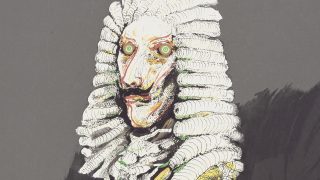Espoo Museum of Modern Art


17.06.2009 - 06.09.2009
A Look at EMMA’s Collections: Treasure Islands and Daydreams
EMMA’s art collections form the cornerstone of its activities. In addition to the Saastamoinen Foundation Collection, which is permanently on display, EMMA has six other collections which will be shown at the summer exhibition A Look at the EMMA Collections.
EMMA’s collection
EMMA’s own collection, the former City of Espoo collection, is the museum’s oldest and most extensive collection. 150 works have been chosen for the exhibition from the more than two thousand works in the collection. Some are normally on deposit in city offices, some are works stored in the museum warehouse. Works by one hundred artists – paintings, sculptures, graphic art, photographs, installations, media works – will be on display. Over the decades new art – contemporary art – has been acquired for the EMMA collection from Espoo and from elsewhere. The exhibition will feature the collection’s finest works: a cross-section of today’s rich and versatile art which will come face to face with modern art forming a living history from a different era.
The exhibition will also comprise a history section relating the birth of the collection and the changes which have taken place in the direction of the collection over the years and showing the change which has taken place in collection work as such.
Raimo Utriainen Foundation Collection
Slatted sculptures from the Raimo Utriainen Foundation Collection on deposit with EMMA have been chosen for the exhibition. The works composed of straight metal slats are abstract sculptures whose form comes from combining straight and curved, transparent and opaque surfaces. Raimo Utriainen (1927-1994) was a monumentalist, a creator of large, public-place sculptures and scale models of several of his public works will be on display. The work of the modernist architect, Arno Ruusuvuori (Utriainen’s fellow student and friend) – the WeeGee building designed by him – and Utriainen’s constructivist pieces will provide a fine complement for one another.
Osmo Valtonen Collection
The Osmo Valtonen Collection was donated to EMMA in 2008. Osmo Valtonen (1929-2002), a time and motion expert, became famous for his technical devices hypnotically drawing their own course in sand. EMMA’s exhibition will feature his sand-drawing instruments and the horror construction, “Earth-moving Machine” whose inspired structures create fascinating and ever-changing forms. In the words of the artist “Technique is too serious to be left in the hands of technocrats.”
Kyösti Kakkonen Art Collection
Kyösti Kakkonen is both a successful businessman and a well-known art collector. He is the owner of one of Finland’s most important collections of glass and ceramics. A new project is the Kyösti Kakkonen Art Collection which focuses on international painting and sculpture and which is constantly growing. Apart from contemporary art the collection also contains works from the late 20th century.
Nordea Bank Finland Ltd Collection
The Nordea Bank Finland Ltd Collection comprises part of the so-called Kouri Collection. During the 1980s the Finnish economist Pentti Kouri (1949-2009) acquired a large collection of international contemporary artworks by many artists who have since become contemporary art classics. In the early 1990s the Kouri Collection, which stood security for Kouri’s loans, fell into the hands of the then Postipankki and in the mid-990s was acquired by the Finnish Ministry of Education. It was later sold and part of the collection was purchased by Nordea Bank Finland Ltd. Seven of the works in the collection are on deposit with EMMA.
The Art Pack, the museum pedagogy educational collection
comprises more than 100 objects and artworks from different periods and different parts of the country. The Art Pack is used in projects, workshops and educational activities where the objects in the Pack are linked time-wise or subject-wise to the workshop or exhibition theme.